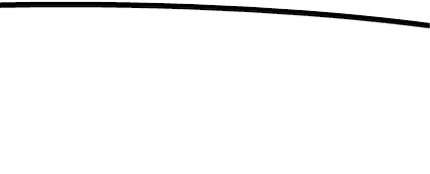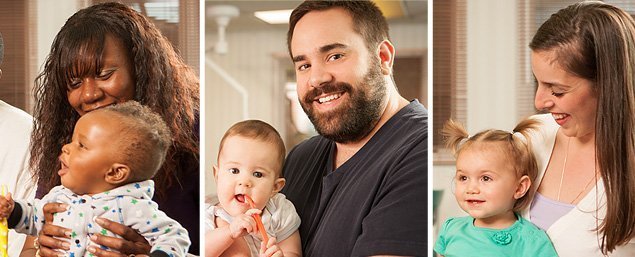





This blog posting is excerpted from the National Center on Health's Brush Up on Oral Health monthly e-newsletter.
Teething can start any time between ages 3 and 12 months. Most babies begin teething around age 6 months. As the primary teeth come into the mouth, babies might become cranky, drool more, not want to eat solid foods, have sore or swollen gums, and chew on things to ease the pressure from the tooth pushing through the gum.
Keep it safe: Choose safe teething toys. Here are some ideas:
Clean it: Many strategies for comforting a teething baby include putting something in the baby’s mouth. Everything that goes in the mouth should be cleaned first to keep the baby healthy. Read the pacifier’s or teething toy’s package for directions on how to clean it. Some items are dishwasher safe and some are not.
Massage it: Gently rub the baby’s gums with a clean finger for about 2 minutes. Many babies find the pressure soothing. For babies who already have some teeth, be careful the baby doesn’t bite you!
Cool it: Cold helps ease the pain of sore gums. Give the baby a cool clean wet washcloth, spoon, pacifier, or teething ring to chew on. Teething rings can be put in the refrigerator but not the freezer. Chewing frozen teething rings can make a baby’s cheeks or chin become bumpy and turn reddish-purple. Note: To prevent mouth injuries, do not let a baby walk while holding a spoon.
Freeze it: Some frozen foods can help ease teething pain. Please see below for two examples.
Don’t use it: Oral health and medical providers don’t recommend using teething gels and liquids on babies’ gums because they can cause serious health problems, including death. If nothing works to ease a baby’s teething pain, encourage parents to ask their baby’s physician or dentist for directions on how to use pain medicine safely.
In addition to the suggestions given above, the American Academy of Pediatrics has information and tips that can help parents comfort a baby who is teething (available in print and audio format in English and Spanish).
Foods to Ease Teething Pain: Here’s a delicious healthy snack that can be given to babies who are teething.
Ingredients
Directions
Note: Bananas and bagels contain sugar that can cause tooth decay. Give these foods to a teething baby once in a while and not throughout the day. Offer the food while the baby is sitting in a high chair.
National Center on Health Brush Up on Oral Health Newsletter Staff
Katrina Holt: kholt@georgetown.edu • (202) 784-9551
Sarah Kolo: sk22@georgetown.edu • (202) 784-9553
Beth Lowe: eal38@georgetown.edu • (202) 687-1864
The National Center on Health encourages you to subscribe to the newsletter and welcomes your feedback on this issue and suggestions for topics for future issues. Please forward your comments to nchinfo@aap.org or call (888) 227-5125.
Read all issues of Brush Up on Oral Health at Early Childhood Learning & Knowledge Center.
This newsletter was prepared under contract #9OHC0005 for the U.S. Department of Health and Human Services, Administration for Children and Families, Office of Head Start, by the National Center on Health. This publication is in the public domain, and no copyright can be claimed by persons or organizations.
